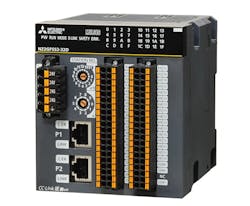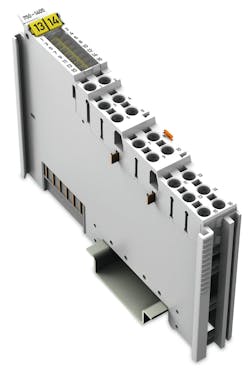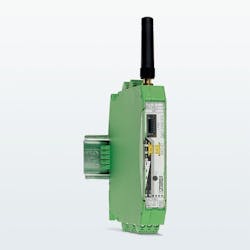The Differences Between Local and Remote I/O
Why this article is worth reading:
Industrial I/O (input/output) modules are critical industrial network components that deliver input signals from a field device, such as a sensor or actuator, to a controller. These modules then route output commands from the controller back to the device. As simple and straightforward as this seems, decisions around how to deploy I/O modules on an industrial network get more complex when you consider the remote and local I/O options available.
These options led one Automation World reader to ask: Can you use remote I/O in the main control/electrical enclosure? Though this question may seem to run counter to the purpose of remote I/O, it is not an uncommon method of remote I/O deployment.
We began our discussion with an explanation of the different industrial I/O types. According to Little:
- Local I/O is a term used to refer to I/O modules located in the same rack or chassis as the controller and typically won’t have any computing power onboard due to its proximity to the controller.
- Distributed or remote I/O is typically deployed in a location separate from than the main controller. As such, distributed I/O will typically have some level of computing power onboard to perform data processing, as well as the ability to turn outputs on and off independent of the main processor.
Given that the definition of remote or distributed I/O indicates that the modules aren't located in the main electrical enclosure, the reader question about how to use remote I/O in the main control enclosure would seem to indicate a lack of understanding about the difference between remote and local I/O. According to Little, the question isn’t as off base as it may seem.
Reasons to put remote I/O in the main enclosure
“There are actually a lot of good benefits” to placing remote I/O modules in the main control cabinet, says Little. Three of the top reasons are: safety, less wiring, and standardization.
On the safety front, preventing arc flash is good reason for putting remote I/O in the main cabinet. With remote I/O in the cabinet, you can have different doors inside your panel to create a high-voltage side and a low-voltage side. “You can put remote I/O in that high-voltage side to assist with troubleshooting without having to open those doors,” he says.
Regarding standardization, if all the I/O modules used in the plant are remote I/O, that can help a company standardize on spare parts. “You can trim down the training needed on the same parts; and using the same part in different locations helps with engineering drawing standards,” Little says.
Higher cost?
Though remote I/O modules used to cost more than local I/O, Little doesn’t see that as being a differentiator today. “You can get the same performance from a more compact remote I/O module that may be less expensive than main PLC I/O cards,” he says. “I think the upfront costs really come down to the network infrastructure. But with industry trending towards everything being on some kind of network, that infrastructure is probably already in place. So if you already have Ethernet for your PLC and your HMI, adding an Ethernet remote I/O isn't much of an addition.”
Plus, there are benefits related to future expansion. “A main PLC chassis usually only has a maximum number of I/O slots, but you can always add remote I/O,” says Little.
Wireless remote I/O
“There are a lot of things going on with data collection now,” says Little, “so if you have a control panel in place and you needed to collect data from it, such as vibration or temperature inside your panel, you can easily add some wireless remote I/O to collect that data. And you wouldn't have to build a whole new infrastructure.”



